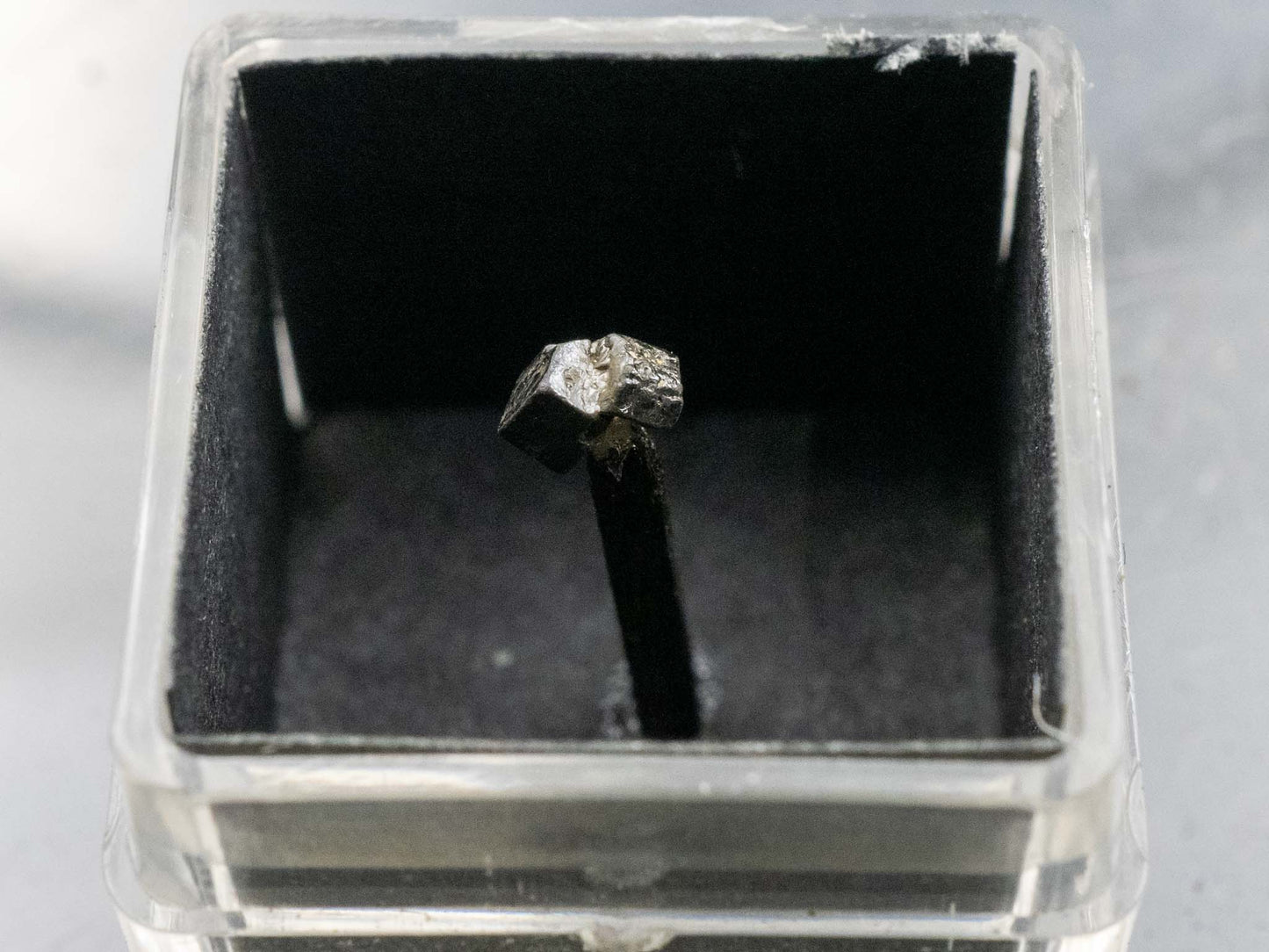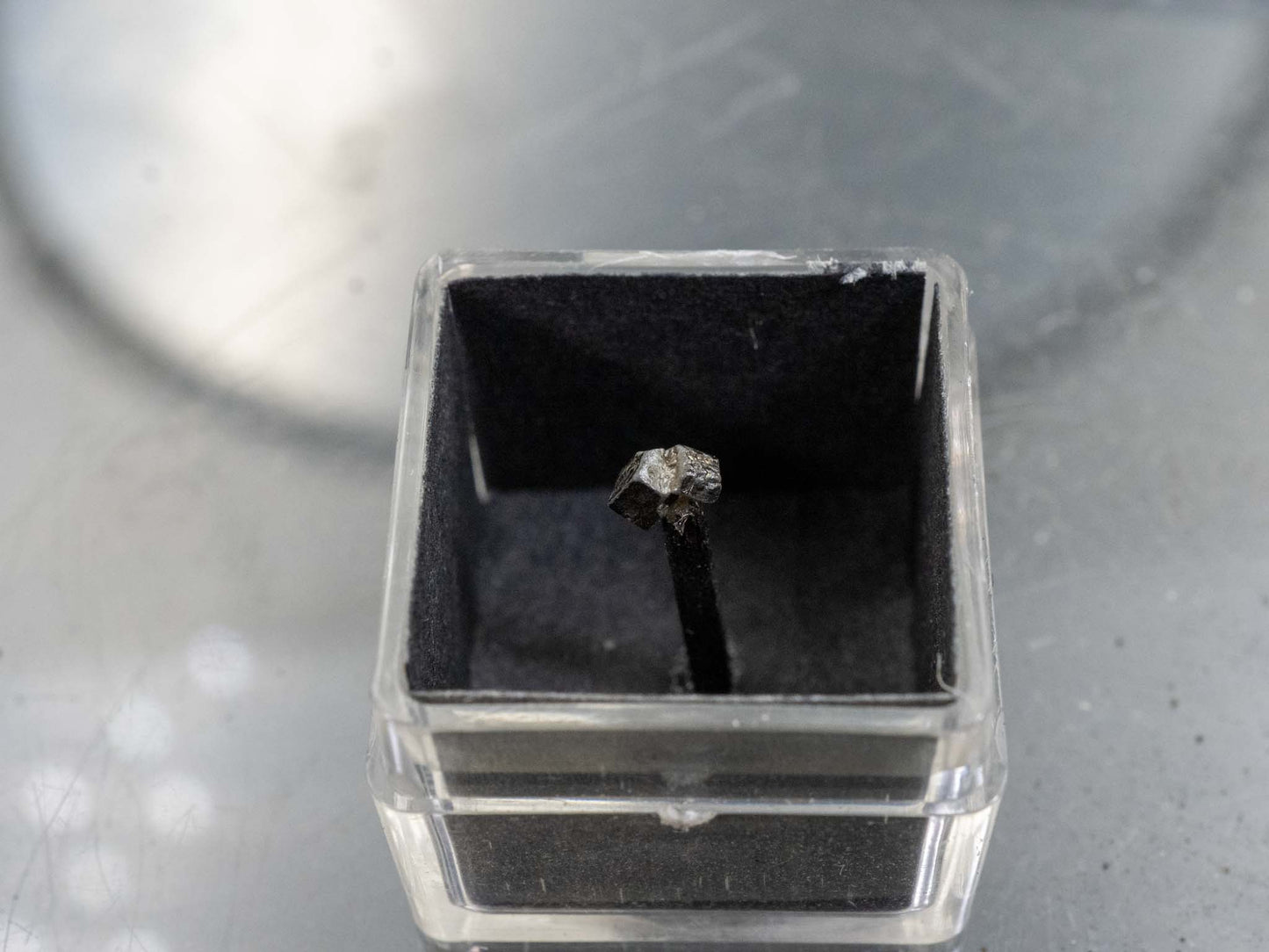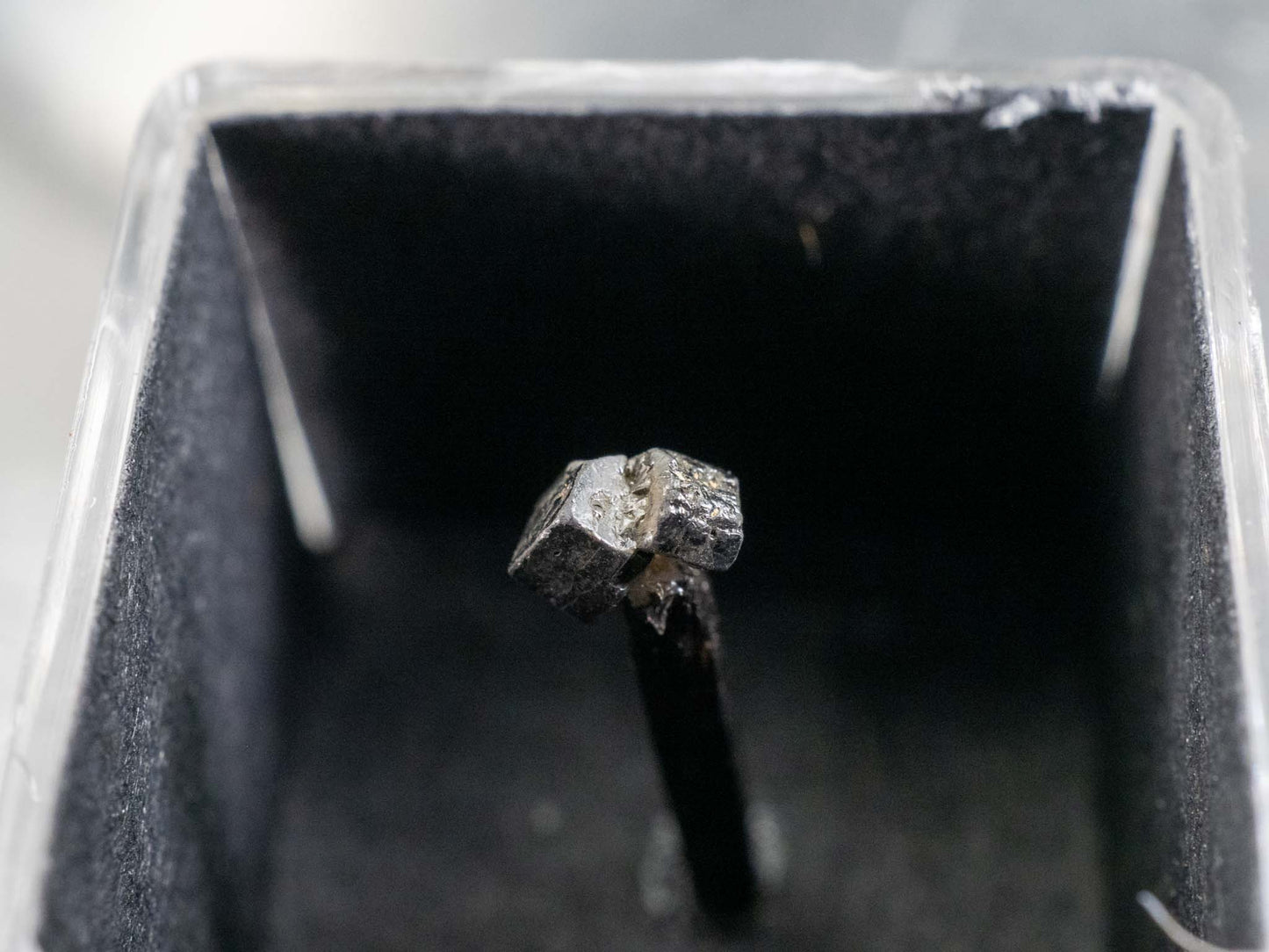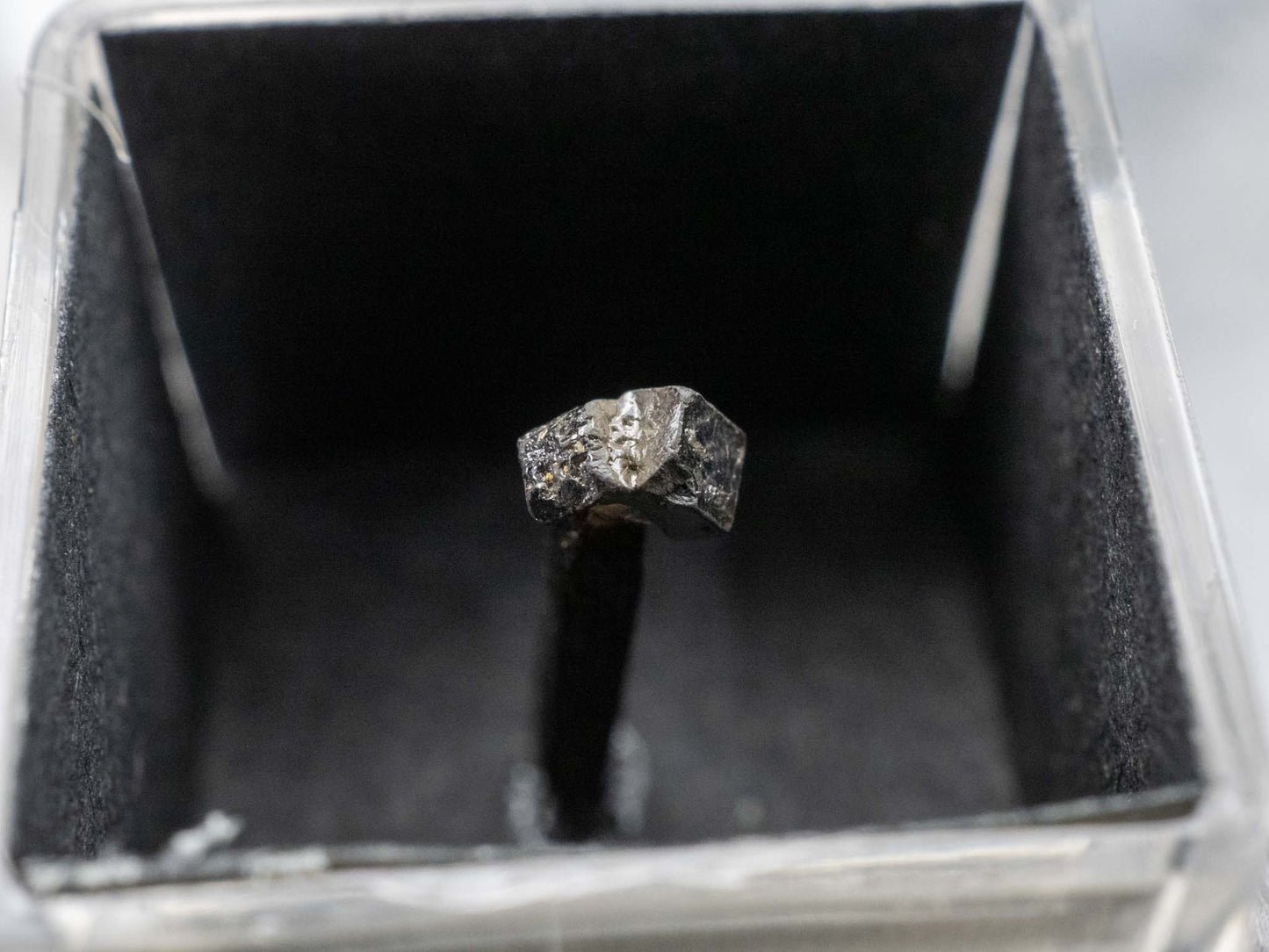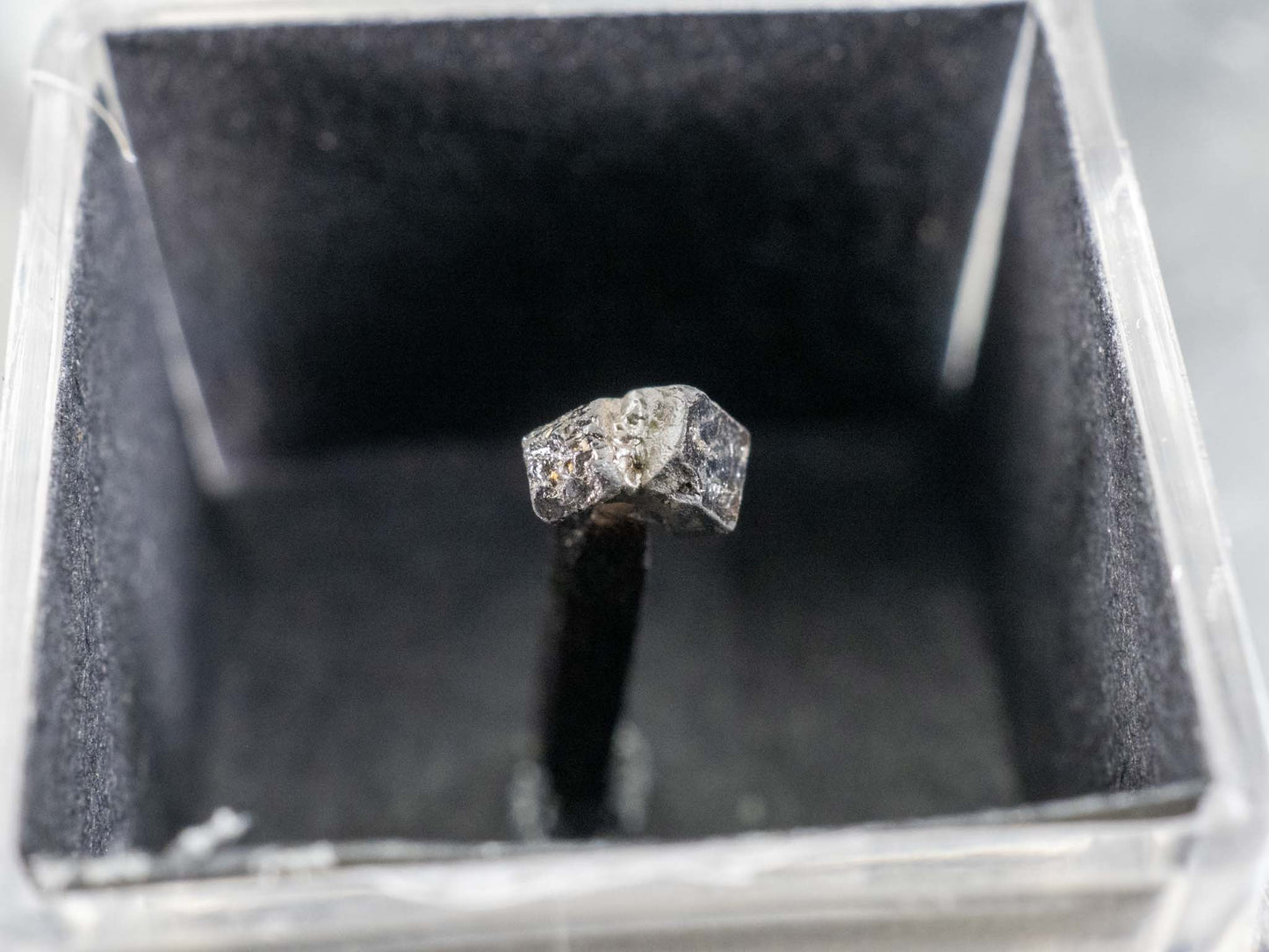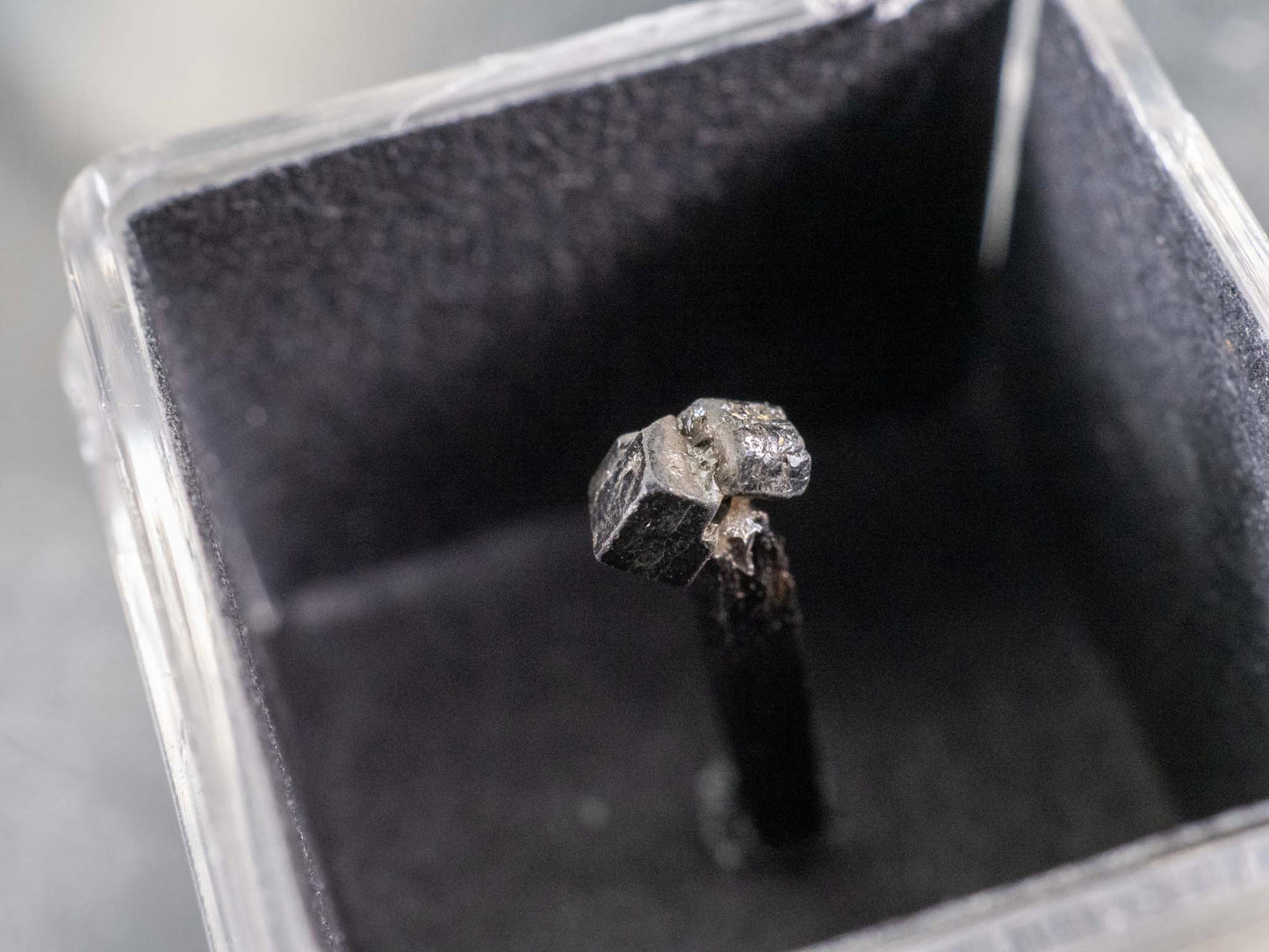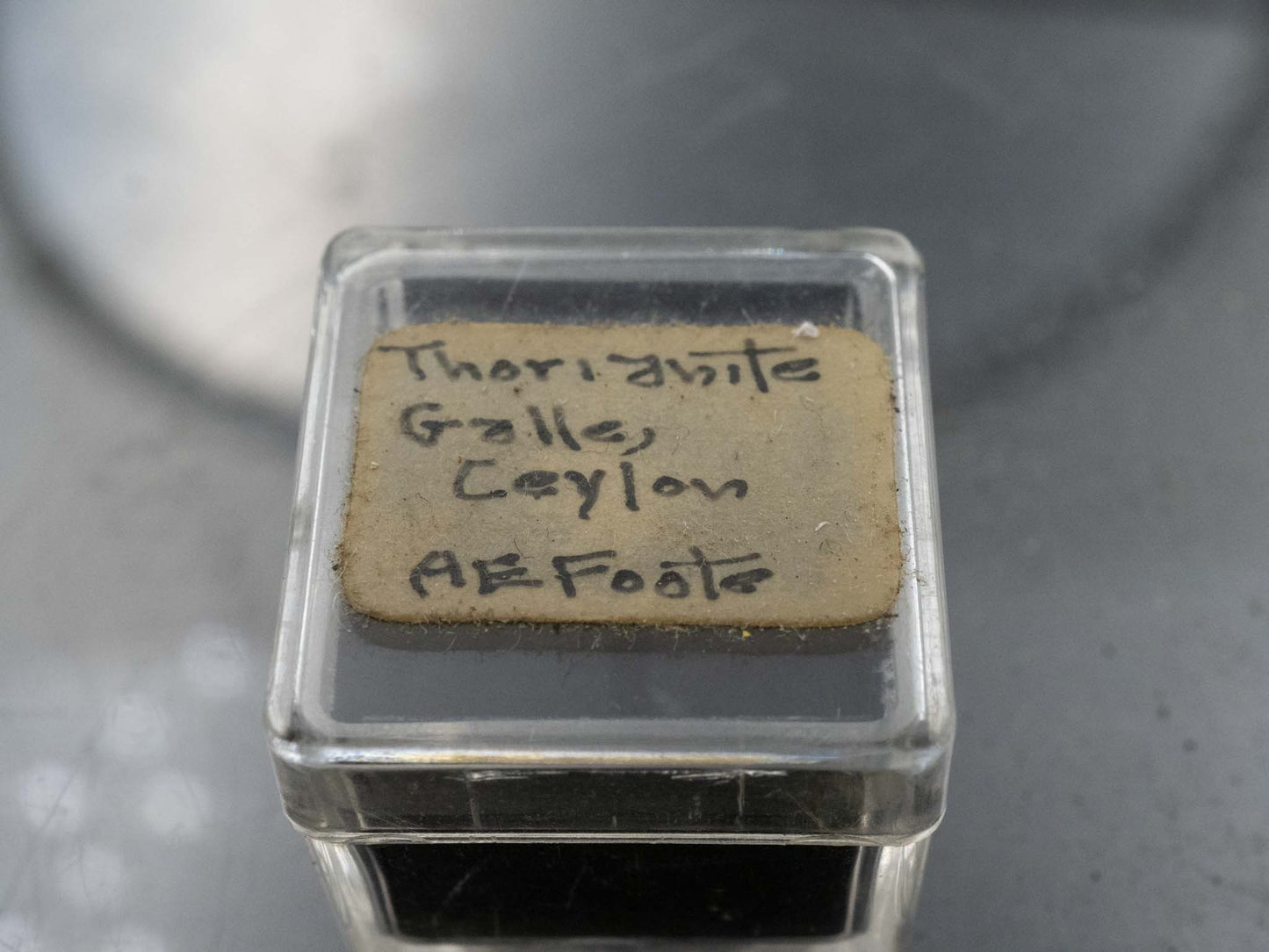Rad Man Minerals
MICROMOUNT: Thorianite - Galle, Ceylon, Sri Lanka (A.E. Foote Specimen)
MICROMOUNT: Thorianite - Galle, Ceylon, Sri Lanka (A.E. Foote Specimen)
Couldn't load pickup availability
 ThO2
ThO2
Thorianite is a rare and highly radioactive thorium oxide mineral with the chemical formula , sometimes containing significant amounts of uranium () and other rare earth elements as impurities. Found in Galle, Sri Lanka (formerly Ceylon), thorianite is well known for its historical and mineralogical significance, as the country was one of the earliest sources of this remarkable mineral. The specimens from Sri Lanka are notable for their high purity and association with the region’s unique geological environment.
In Galle, thorianite occurs in alluvial deposits derived from the weathering of granitic pegmatites and metamorphic rocks. These deposits are rich in heavy minerals, and thorianite is often found as small, dense, black to dark gray grains or rounded crystals. Its natural occurrence in the region is linked to the tropical climate, which accelerates the weathering of parent rocks and concentrates heavy minerals, including thorianite, in placer deposits. These deposits also yield other heavy minerals such as zircon, ilmenite, and monazite, further enhancing the region’s reputation as a significant mineral locality.
Thorianite from Galle is scientifically important due to its role in understanding the distribution and behavior of thorium in natural systems. As a primary ore of thorium, it has been studied for its potential use as a nuclear fuel in thorium-based reactors, a concept that has gained renewed interest for its safety and sustainability advantages over uranium. The mineral’s high thorium content and radioactivity also make it a valuable specimen for studying radioactive decay and isotopic dating, providing insights into geological processes over billions of years.
Historically, thorianite from Sri Lanka has played a role in the development of nuclear science. In the early 20th century, it was a key source of thorium for industrial and scientific applications. Its discovery highlighted the region’s rich mineral resources and contributed to the broader understanding of thorium-bearing minerals. Specimens from Galle, with their dense, metallic luster and historical provenance, are highly prized by collectors.
This specimen comes from renowned mineral dealer A.E. Foote. A.E. Foote (1846–1895) was a prominent American mineral dealer, geologist, and medical doctor who played a significant role in popularizing mineral collecting during the late 19th century. Based in Philadelphia, Foote was renowned for his extensive and meticulously cataloged inventory of mineral specimens, many sourced from major mining regions in the United States. He provided specimens to collectors, museums, and academic institutions, contributing to the growth of mineralogical study in America. Foote’s influence extended through his publications, including catalogues and papers, which combined scientific rigor with a passion for collecting. His pioneering efforts set a high standard for mineral dealing and established him as a key figure in the history of mineralogy.
Approx. specimen size: 4mm x 3mm x 3mm
